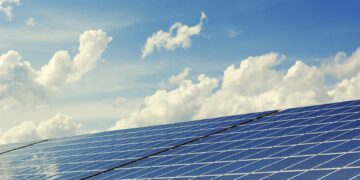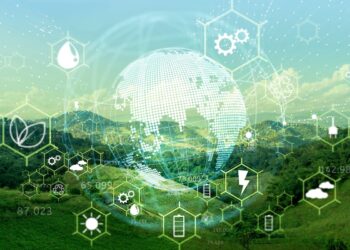[ad_1]
Powering the Future: Harnessing the Potential of Renewable Energy Sources
As the world continues to grapple with the pressing issue of climate change, the need for sustainable and renewable energy sources has never been more urgent. The burning of fossil fuels for energy production has been identified as a major contributor to greenhouse gas emissions, which are responsible for the warming of the planet and the resulting environmental catastrophes. In this article, we will explore the potential of renewable energy sources in shaping the future of energy production and how they can help us transition to a more sustainable and environmentally friendly energy system.
The Rise of Renewable Energy
Renewable energy sources, such as solar, wind, hydro, and geothermal power, have been gaining momentum in recent years as viable alternatives to traditional fossil fuels. These sources of energy are abundant, clean, and have the potential to power the world without depleting our natural resources or harming the environment. With advancements in technology and increased investment in renewable energy infrastructure, the cost of renewable energy production has been steadily decreasing, making it more competitive with fossil fuels.
Solar Power
Solar power is one of the most promising renewable energy sources, with the potential to provide clean and sustainable energy to millions of people around the world. Solar panels harness the energy of the sun and convert it into electricity, which can be used to power homes, businesses, and even entire cities. The cost of solar panels has been steadily decreasing in recent years, making solar power an increasingly attractive option for energy production.
Advantages of Solar Power
- Abundant and renewable source of energy
- Reduces greenhouse gas emissions
- Low operating costs
- Can be installed on rooftops or in large solar farms
Wind Power
Wind power is another renewable energy source that has been gaining popularity in recent years. Wind turbines harness the power of the wind and convert it into electricity, which can be used to power homes, businesses, and communities. Wind power is clean, abundant, and has the potential to provide a significant portion of the world’s energy needs.
Advantages of Wind Power
- Abundant and renewable source of energy
- Low operating costs
- Can be installed onshore or offshore
- Reduces reliance on fossil fuels
Hydro Power
Hydro power, or hydropower, is the largest source of renewable energy in the world. It harnesses the power of flowing water, such as rivers and streams, to generate electricity. Hydro power is clean, reliable, and has the potential to provide a significant portion of the world’s energy needs. However, the construction of hydroelectric dams can have negative environmental impacts, such as disrupting ecosystems and displacing communities.
Advantages of Hydro Power
- Abundant and renewable source of energy
- Reliable and consistent energy production
- Low operating costs
- Can be used for both large-scale and small-scale energy production
Geothermal Power
Geothermal power harnesses the heat of the earth’s core to generate electricity. This renewable energy source is clean, reliable, and has the potential to provide a significant portion of the world’s energy needs. Geothermal power plants can be built in areas with high geothermal activity, such as near volcanoes or hot springs. However, the construction of geothermal power plants can be expensive and may require significant investment in infrastructure.
Advantages of Geothermal Power
- Abundant and renewable source of energy
- Reliable and consistent energy production
- Low operating costs
- Reduces reliance on fossil fuels
The Future of Renewable Energy
Renewable energy sources have the potential to revolutionize the way we produce and consume energy. By harnessing the power of the sun, wind, water, and earth, we can create a sustainable and environmentally friendly energy system that will help us combat climate change and protect our planet for future generations. With continued investment in renewable energy infrastructure and advancements in technology, we can power the future with clean and sustainable energy sources.
As individuals, we can also play a role in promoting renewable energy by making small changes in our daily lives, such as installing solar panels on our homes, using energy-efficient appliances, and supporting policies that promote renewable energy development. By working together, we can harness the potential of renewable energy sources and create a brighter and more sustainable future for all.
Conclusion
The potential of renewable energy sources in powering the future is immense. With advancements in technology and increased investment in renewable energy infrastructure, we have the opportunity to transition to a more sustainable and environmentally friendly energy system that will help us combat climate change and protect our planet for future generations. By harnessing the power of the sun, wind, water, and earth, we can create a clean and sustainable energy system that will power the future and ensure a brighter tomorrow for all.
It is essential that we continue to support and promote renewable energy sources and take steps to reduce our reliance on fossil fuels. By working together and making informed choices, we can create a more sustainable future for ourselves and generations to come.
[ad_2]












